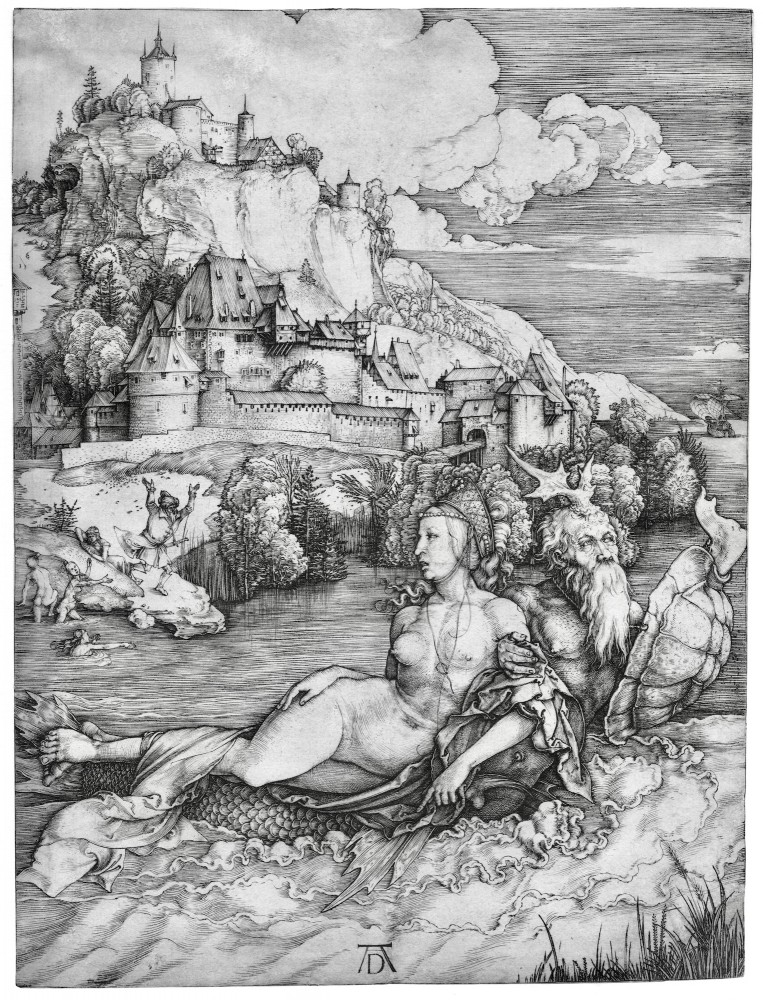Original engraving, monogrammed in plate; Meder 66 a-b/k;
Superb proof in one of the earliest variants, although the absence of watermark does not allow one to identify more precisely whether it is the first or the second; the proof in fact does not show the typical scratches from the third onwards.
Complete and in very good condition, with the exception of a couple of tiny reinforcements on the front and back, perfectly executed, in the area of the sky, and apparently useless because the paper appears to be in sound condition.
Although the iconography of the Sea Monster has created various and contrasting interpretative dilemmas for all Dürer scholars, the most accredited version is the one advanced by Lange -supported by Erwin Panofsky- who refers the image to a popular legend of the Adriatic coast that must have intrigued, and inspired, the German Master during his first trip to Italy. Thanks to the humanist Poggio Bracciolini (1380-1459), the Dalmatian story has come down to us of a terrible triton, a half-human, half-fish monster with the horns of a deer and a bushy beard, who used to lure women and children to the beach with evil intentions. The triton was eventually killed by five washerwomen and its 'wooden form' (it is unclear whether a carved image or its desiccated body) displayed in Ferrara where it was seen by Bracciolini.
Beyond the possible explanation, the Sea Monster constitutes one of the most fascinating and cryptic works of Dürer's early period: from the beautifully described landscape to the beauty of the female figure in the foreground who manages to escape the monster's grasp. As in all Dürer's engravings, the Maestro's ability to give the tactile perception of materials stands out, such as the carapace of the turtle, the monster's scales, the bone of the horns, and even the velvet of the fabric that envelops the protagonist.

